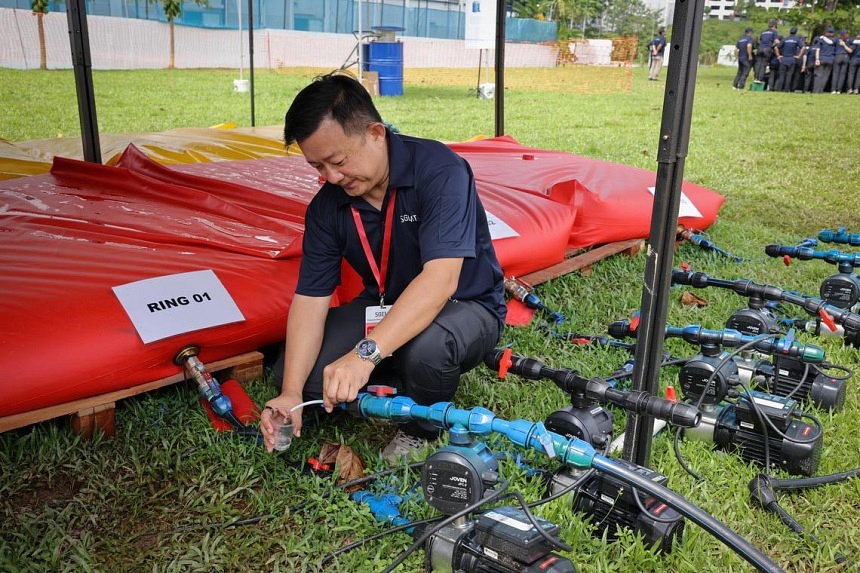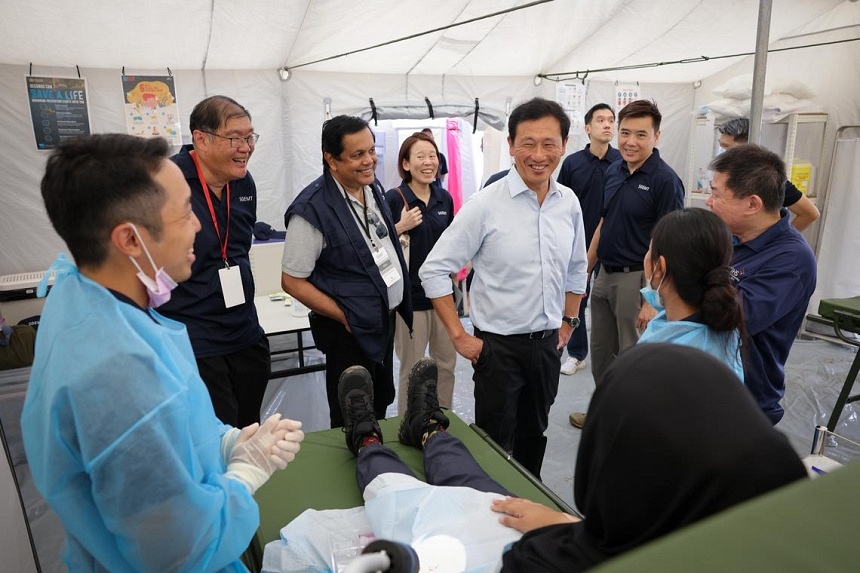Singapore sets up emergency medical team, certified by WHO, for local and international crises


SINGAPORE — The next time a major earthquake or cyclone hits the region, Singapore will be able to deploy a World Health Organisation (WHO)-certified emergency medical team (EMT) within 72 hours.
To qualify as a WHO EMT, the team has to be fully self-sufficient during its deployment.
This means that the EMT must generate its own electricity and clean water, manage all its medical and waste disposal, and arrange its own accommodation.
"Self-sufficiency is important for EMT because you have a small life-saving window immediately after a disaster. The first hours and days are critical," said Sean Casey, WHO's programme area manager for emergency operations and regional EMT focal point.
"Being able to deploy quickly and to be self-sufficient if there are no local facilities operational, there are no hotels to stay in, there is no food in the market... and to provide high quality clinical care to the standards that any of us would accept for ourselves or for our families is one of the core principles of EMTs," he added.
For a start, 66 healthcare personnel from the SingHealth cluster have been trained under the Singapore Emergency Medical Team (SGEMT) initiative. They include emergency department specialists, paediatric specialists, midwives and psychologists.
Singapore's three healthcare clusters will each take turns to be on standby for deployment, and rotate every six months.
When deployed, a team of 33 medical, technical and administrative personnel will head to the crisis site to set up a facility akin to a field hospital. The facility will provide emergency services, primary care, and maternal and child health outpatient care to more than 100 patients a day for up to two weeks.
This means that healthcare professionals will also have to pick up skills such as logistics and handling water, sanitation and hygiene technologies. To achieve this, SGEMT worked with ST Engineering.

"They taught us how to set up and refill the generators, and where we should run the cables. They also taught us how to lay down the water pipes," said Dr Joy Quah, SGEMT's clinical lead, who is also a consultant at Singapore General Hospital's emergency medicine department.
SGEMT also had to develop protocols and processes for deployment, including clinical, logistical and administrative guidelines.
For example, to help prepare the team psychologically for working in a disaster zone, a clinical psychologist will support before, during and after deployment.
"SGEMT is the first to bring in a clinical psychologist. We found that it was very important because the clinical psychologist not only looks after casualties of the disaster, but also he or she will be able to take the time to look after the staff as well," Dr Quah said.
At the inauguration of SGEMT on Sept 12 at the Home Team Tactical Centre, Minister for Health Ong Ye Kung noted that Singapore established the team in 18 months, from conceptualisation to completing the verification process by WHO. Other teams have taken several years to complete the process.
"But in typical Singapore fashion, we learnt from the experiences of past missions," Ong said.

He added: "We developed a whole-of-government approach, worked closely with public healthcare institutions to conceptualise the system and design the processes and structures, partnered the Singapore Armed Forces and Singapore Civil Defence Force to tap their expertise, and collaborated with the Ministry of Foreign Affairs to fortify the SGEMT's global operational capabilities and ensured support from Singapore's diplomatic network worldwide."
Singapore is the 13th country in the Western Pacific region to host a WHO-verified EMT team. The region extends from the Mongolian steppes in Central Asia to New Zealand, and includes countries in South-east Asia.
Ong pointed out that because of Asean's geography — with the region bordering major oceans of the world and funnelling major changing winds — it has dealt with more than its fair share of natural disasters.
Since 2012, Asean has been hit by approximately 15 per cent of the world's disasters, with close to 1,900 occurrences. More than a billion lives were affected, resulting in US$17 billion (S$22 billion) in losses.
Singapore has activated its disaster relief teams for the 2018 Sulawesi earthquake, the 2015 Nepal earthquake and Typhoon Haiyan, which hit the Philippines in 2012.
"Today's officiation of SGEMT underscores Singapore's commitment to strengthen regional disaster response capabilities, ensuring that timely and high quality medical care is available, where it is most needed," Ong said.
He added that SGEMT can also be deployed locally.
"This will enhance our healthcare system's response during major incidences such as the Nicoll Highway collapse, or in mass casualty events where immediate medical intervention and sustained medical support for first responders are required."
This article was first published in The Straits Times. Permission required for reproduction.